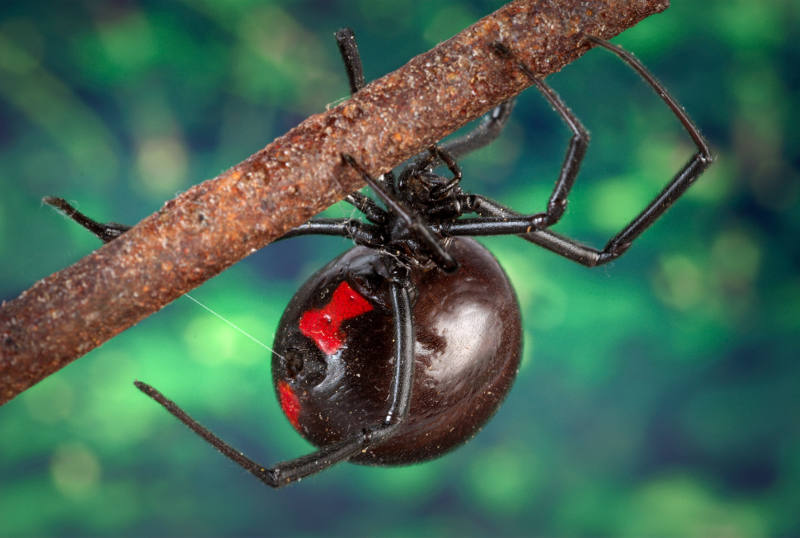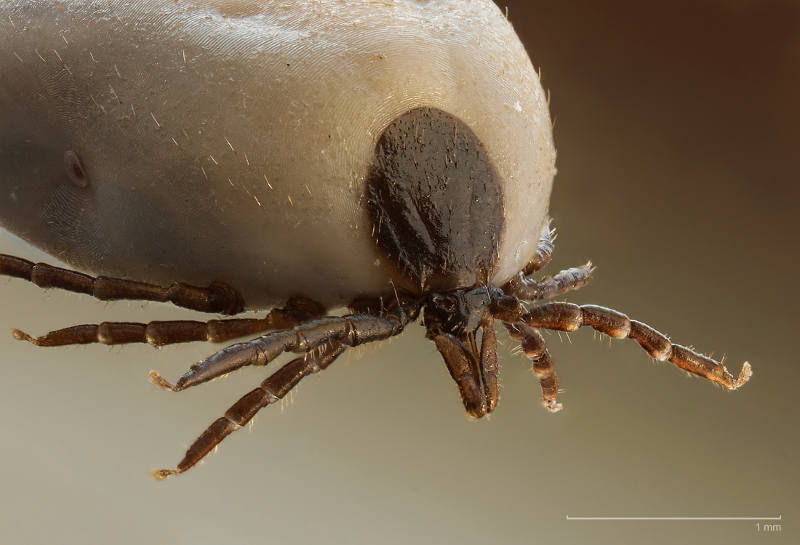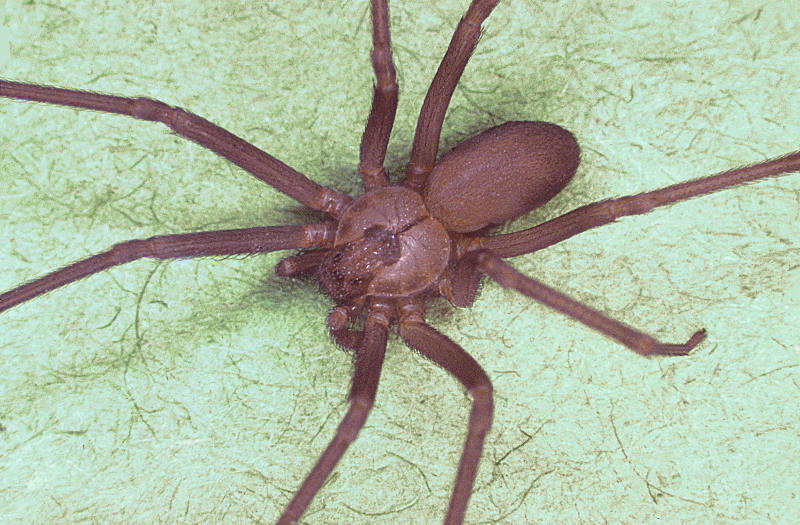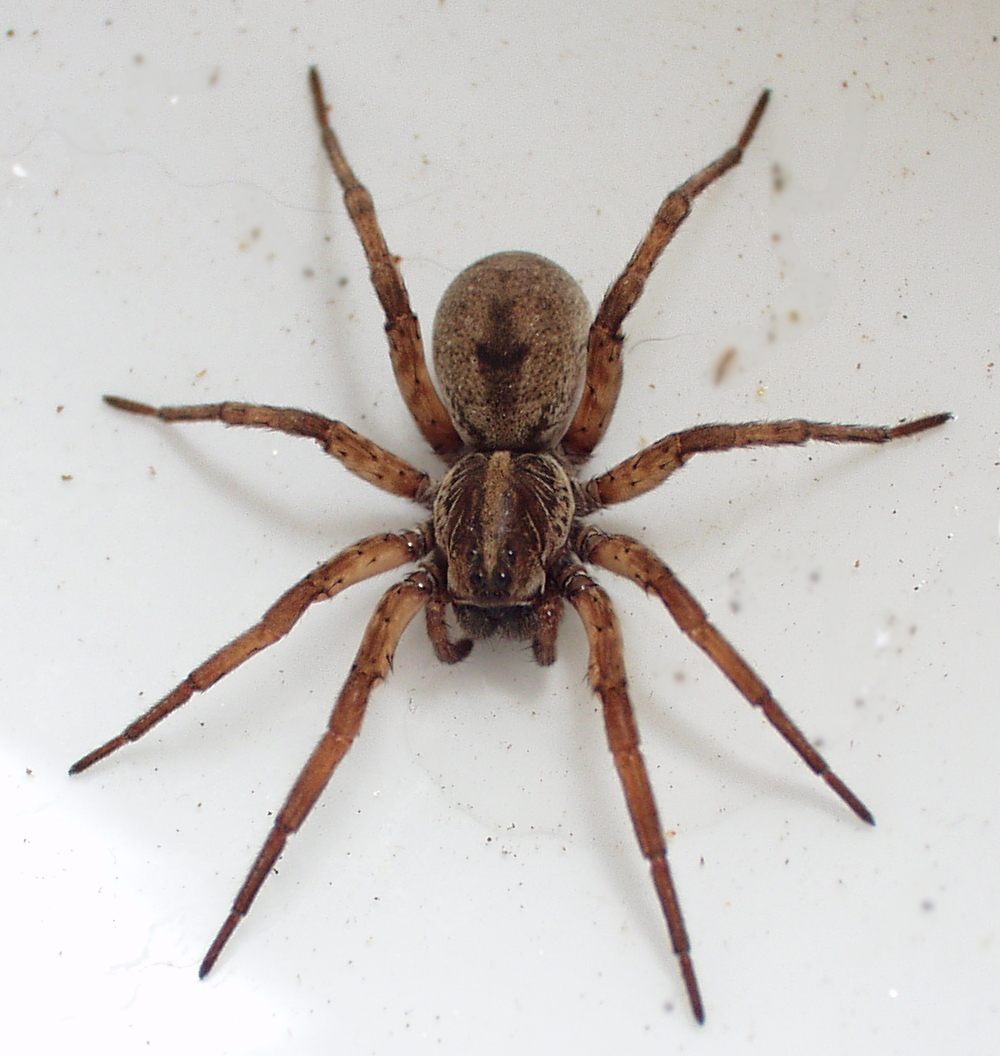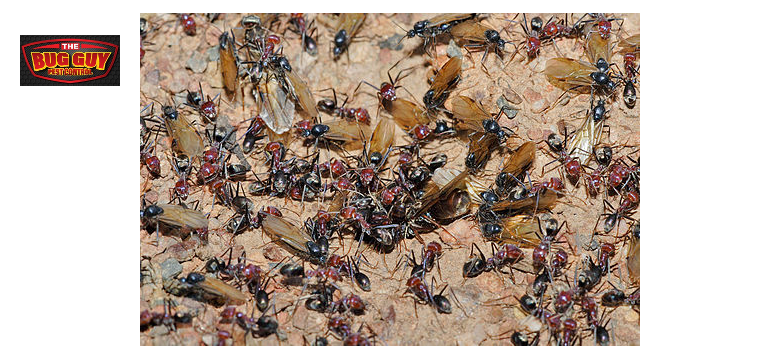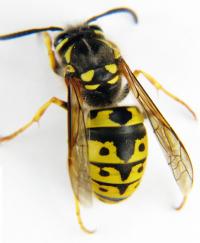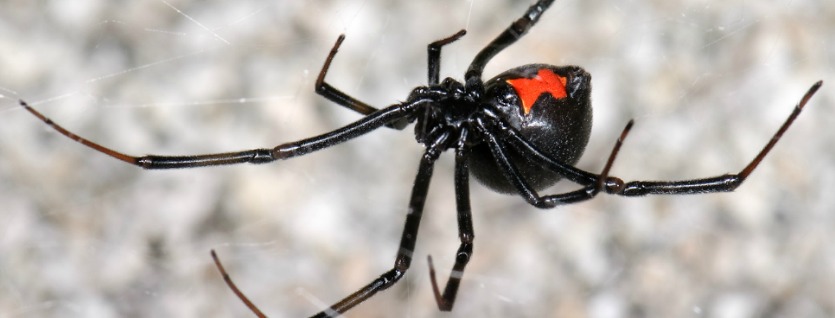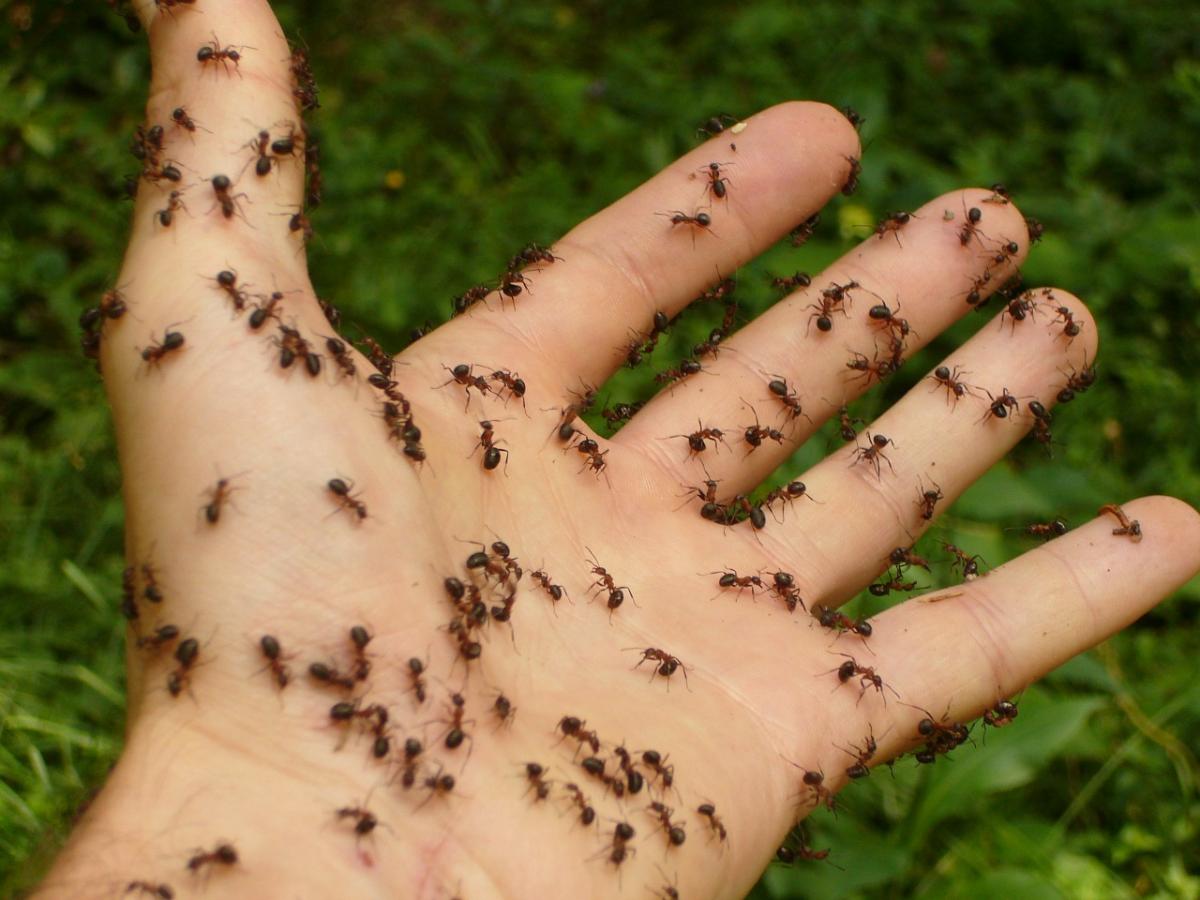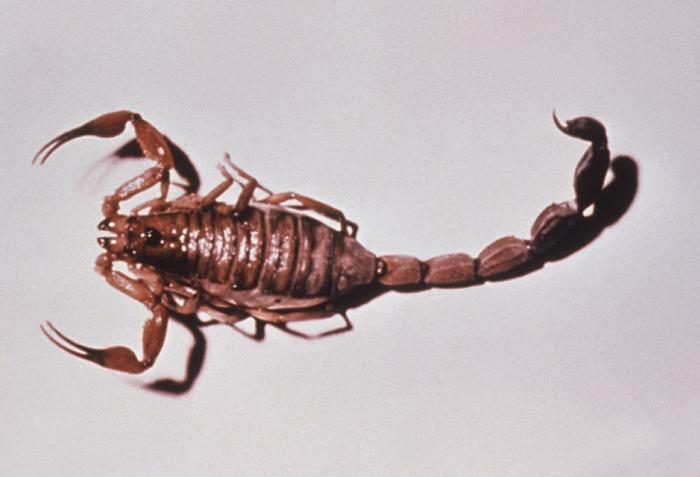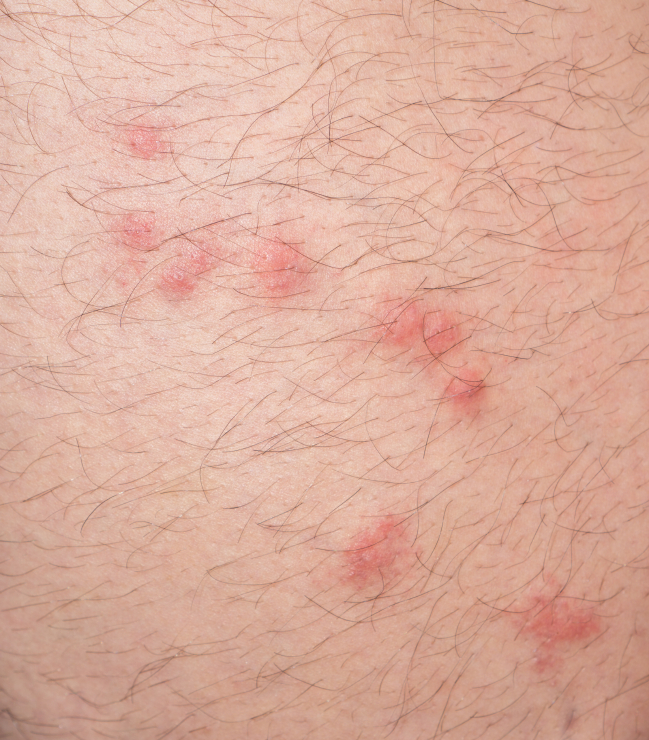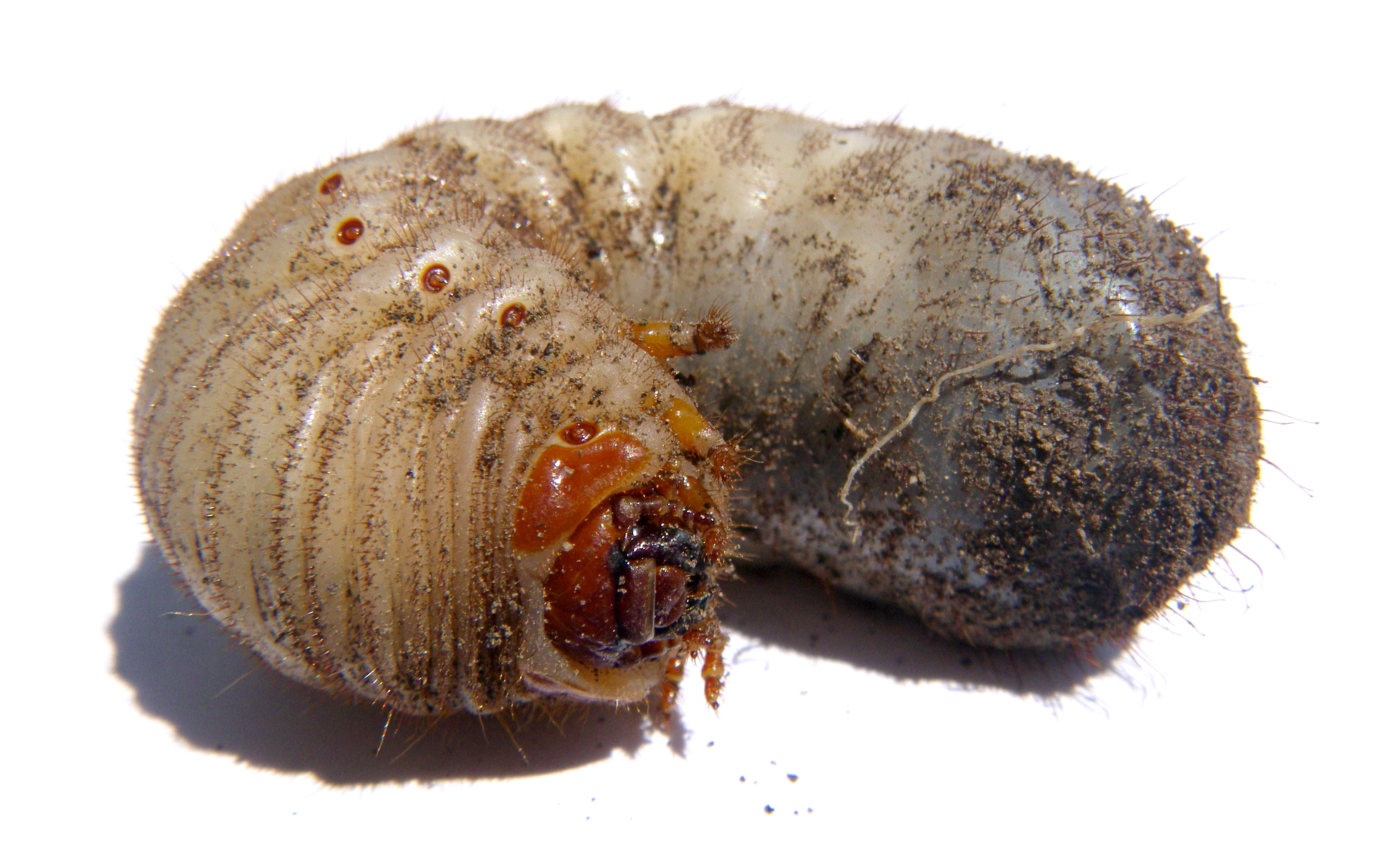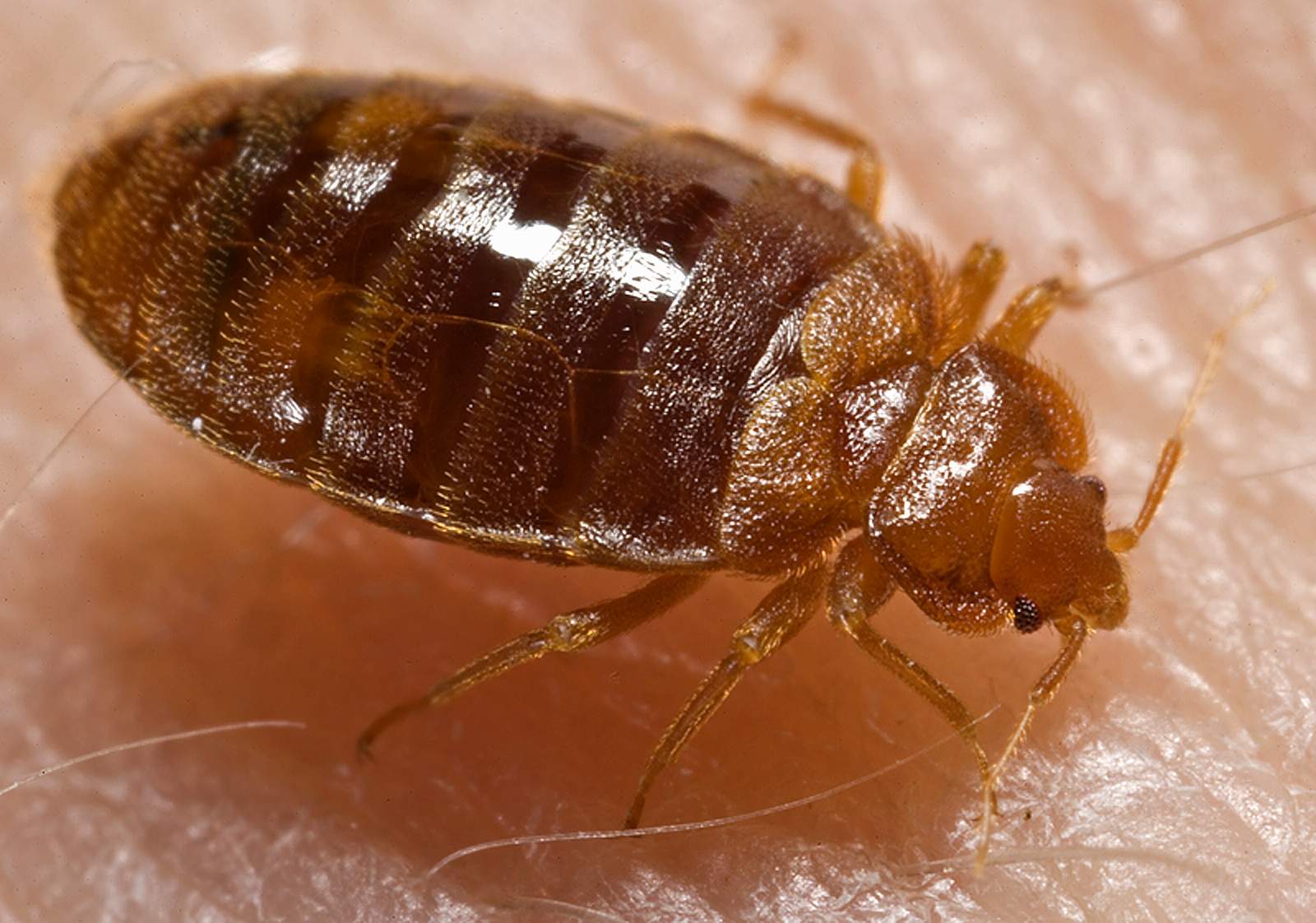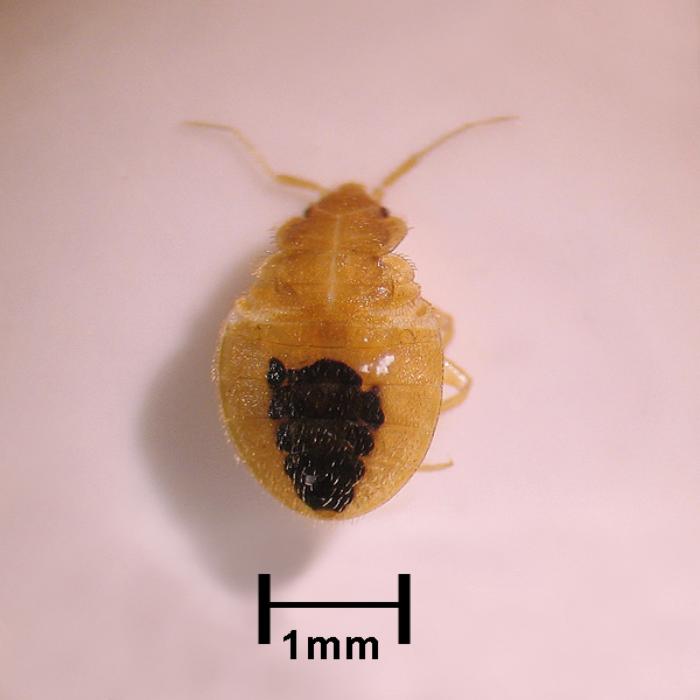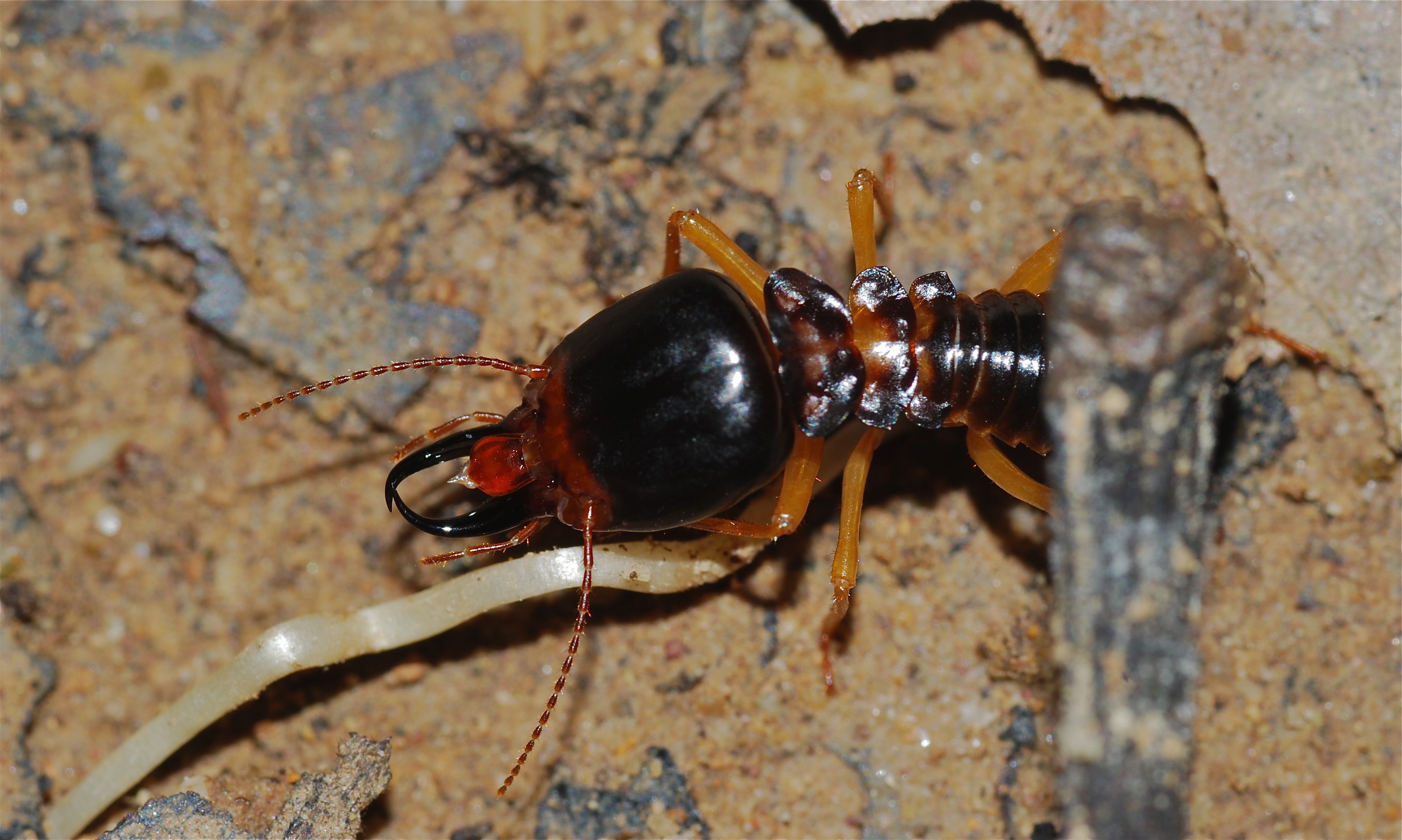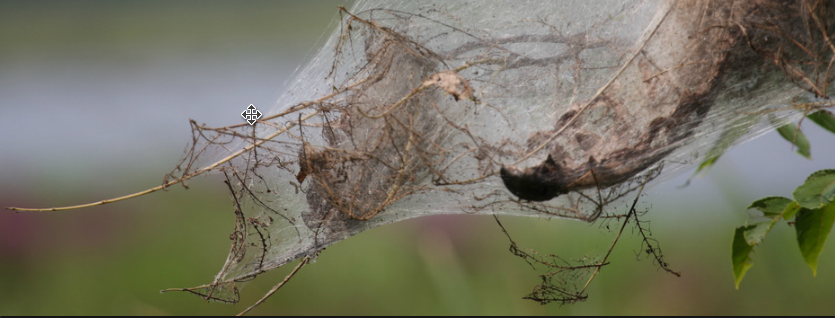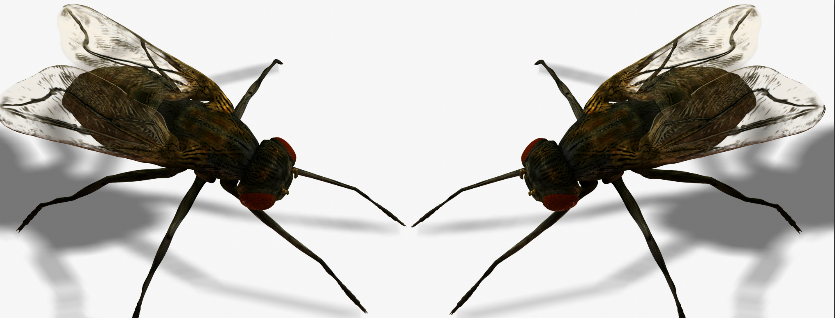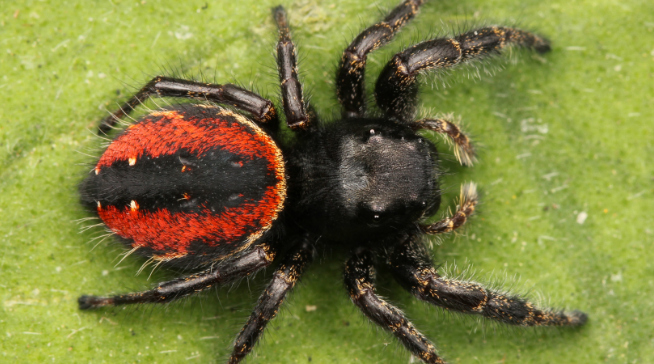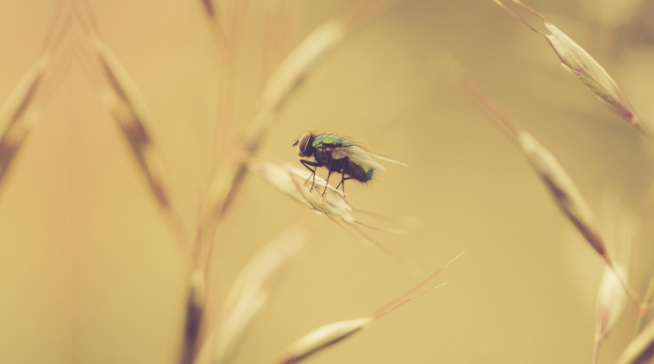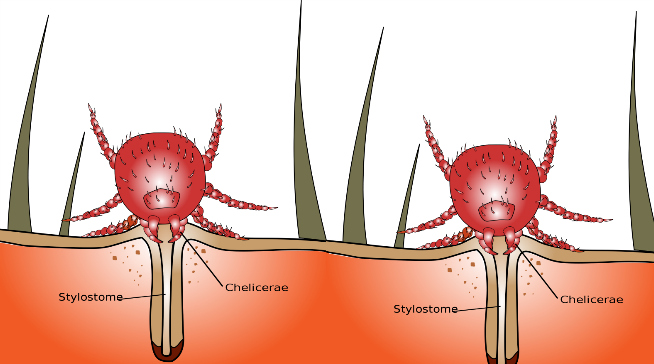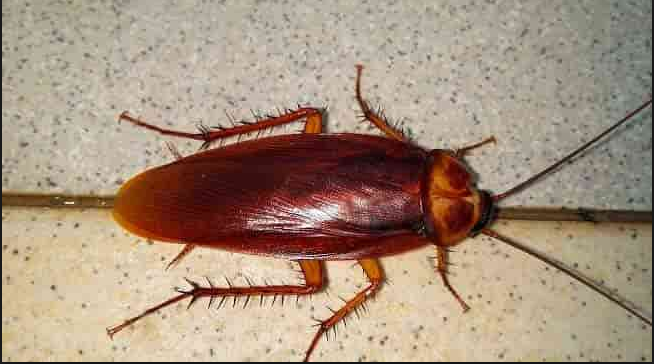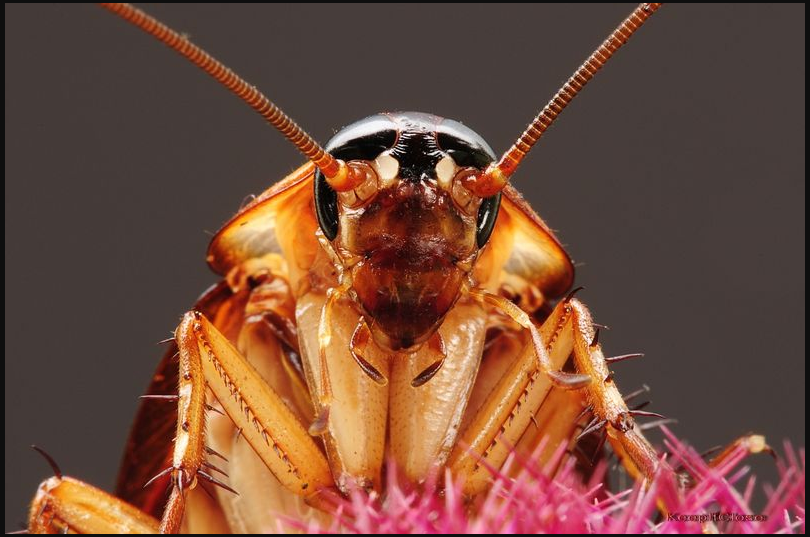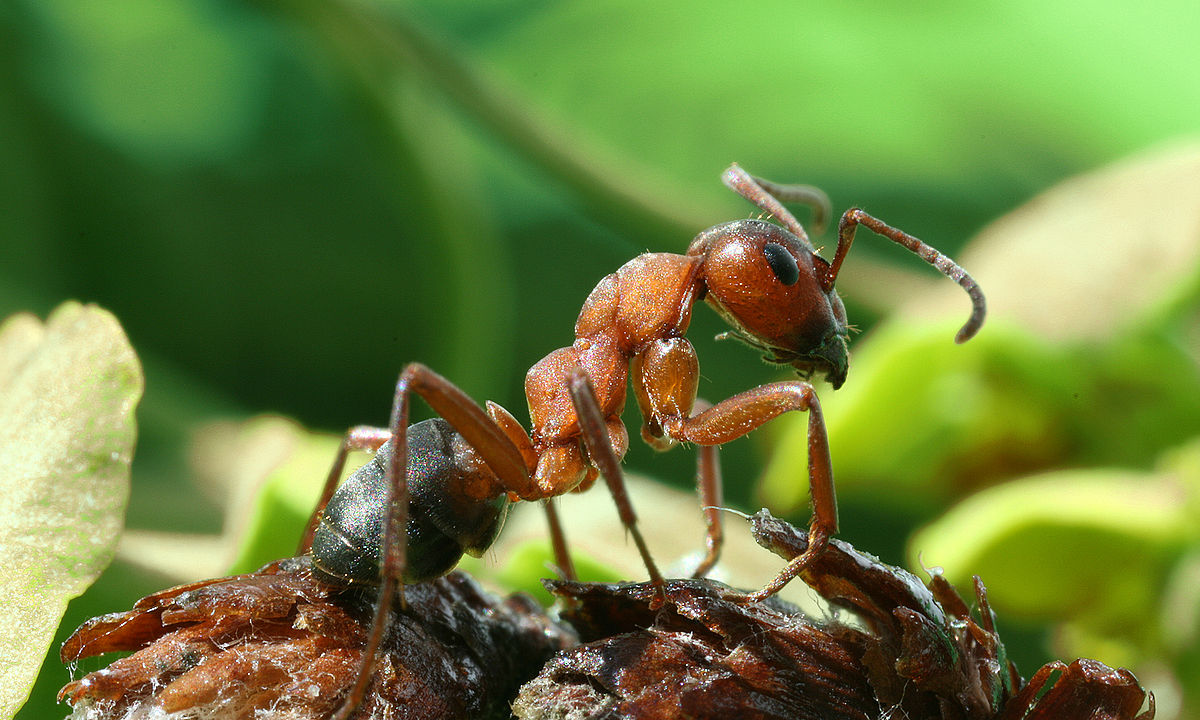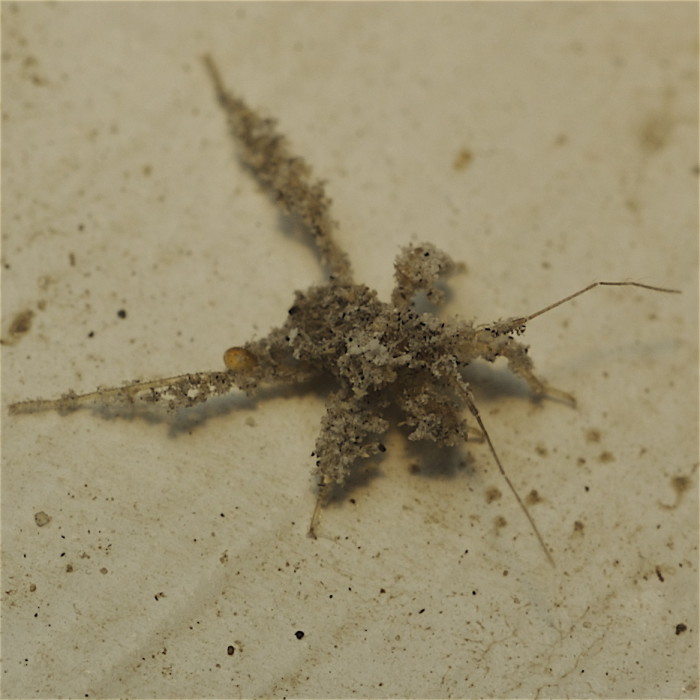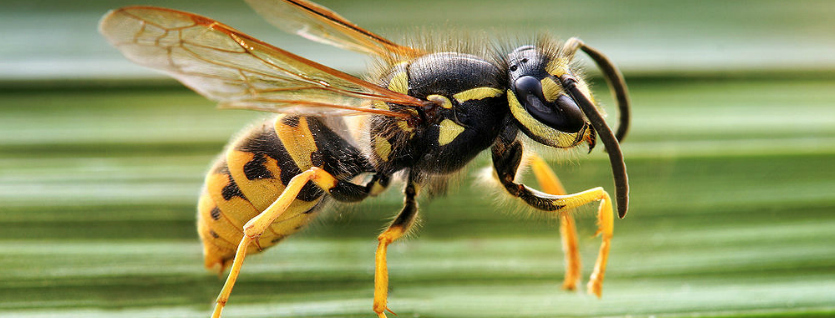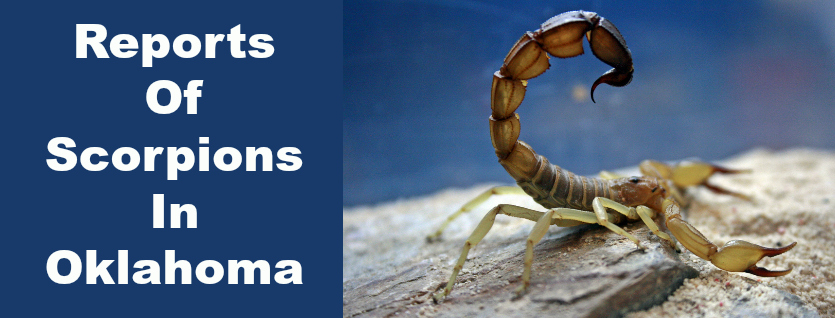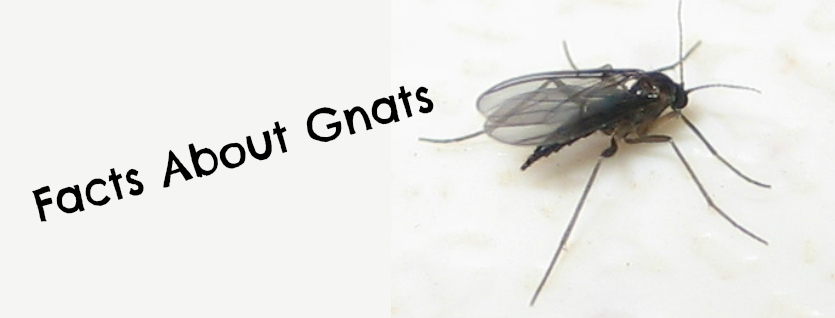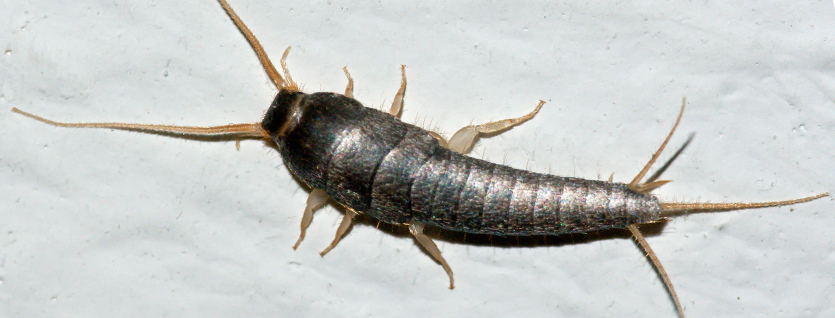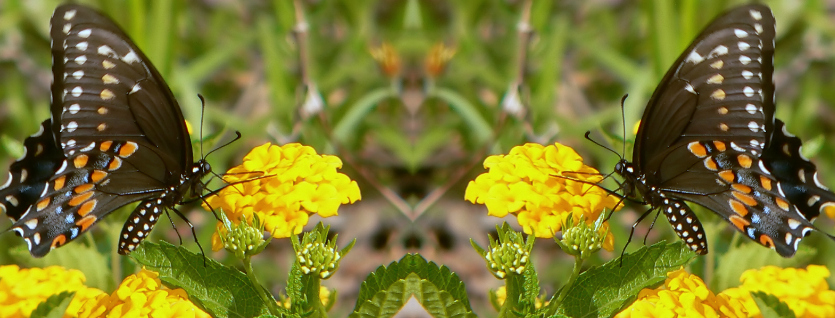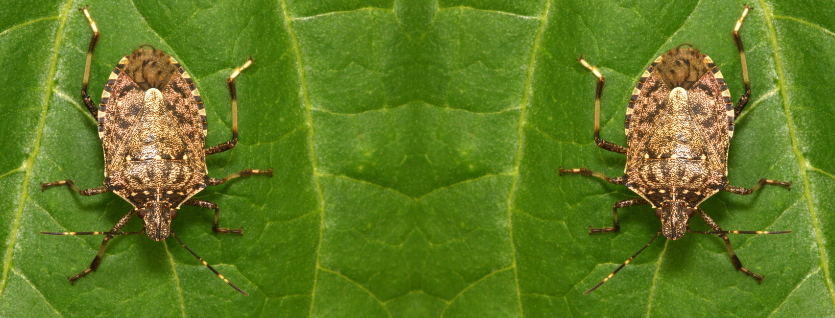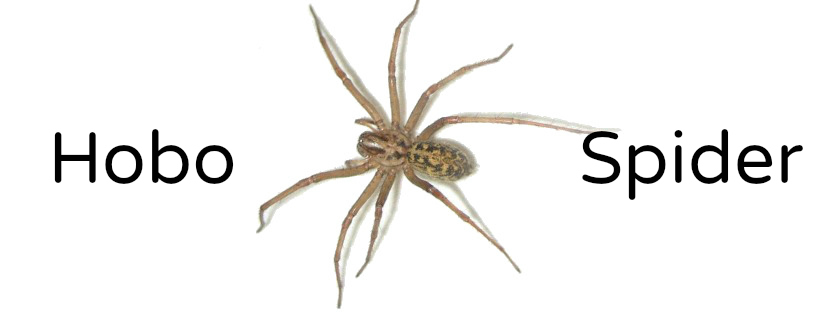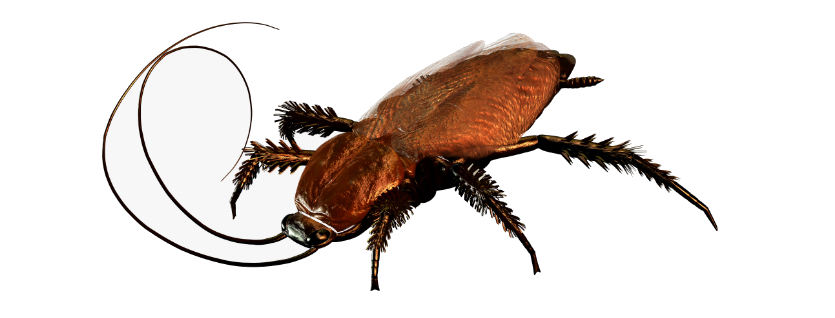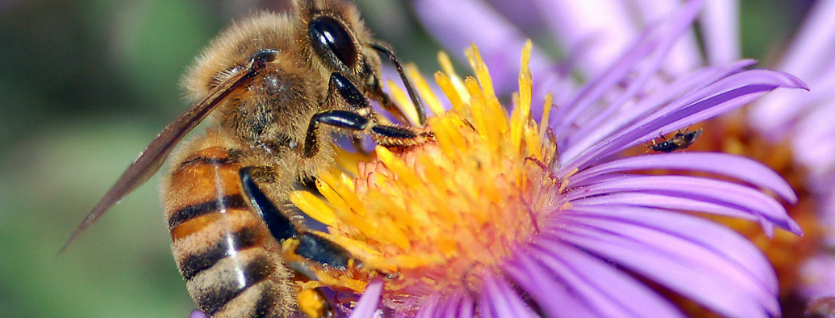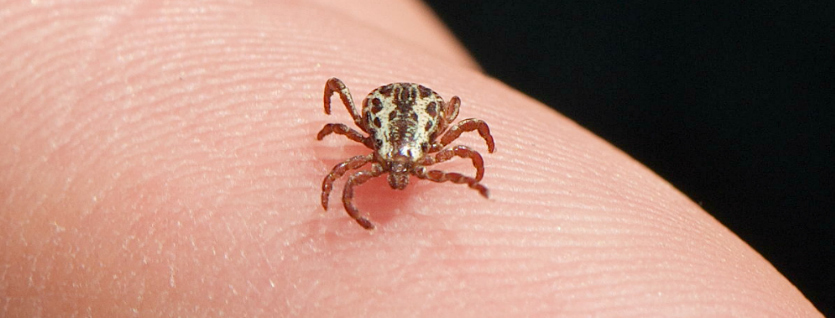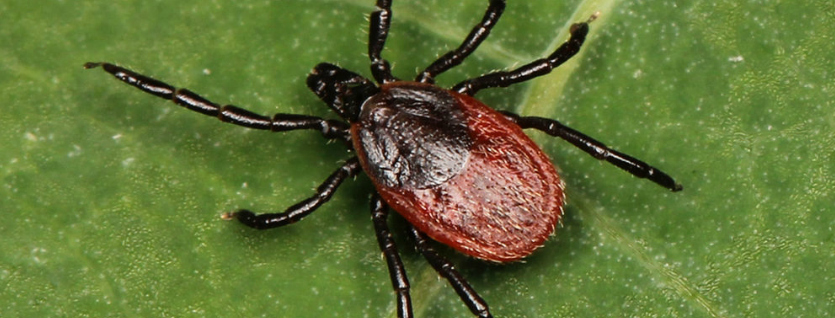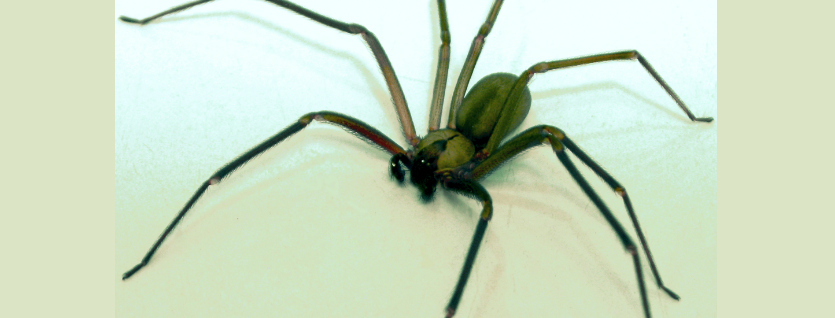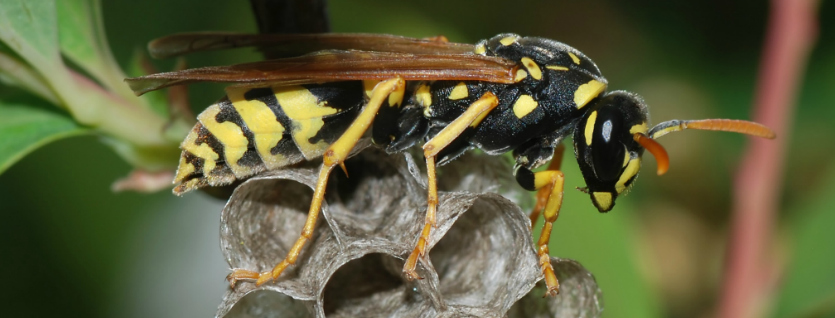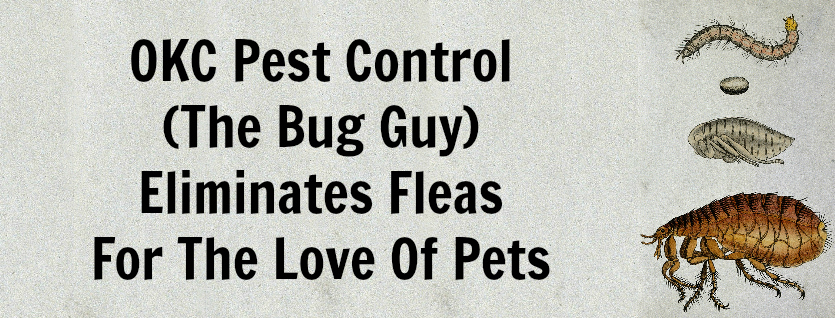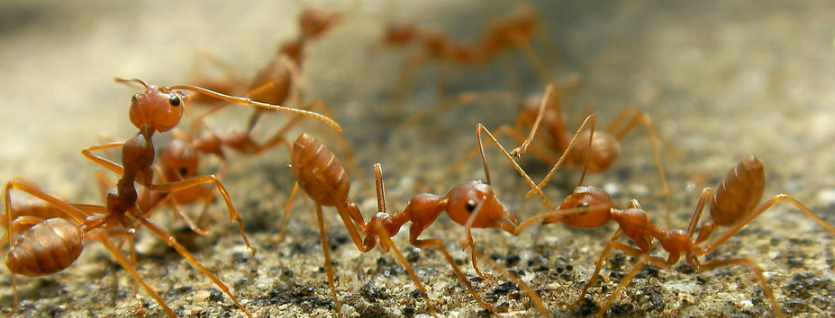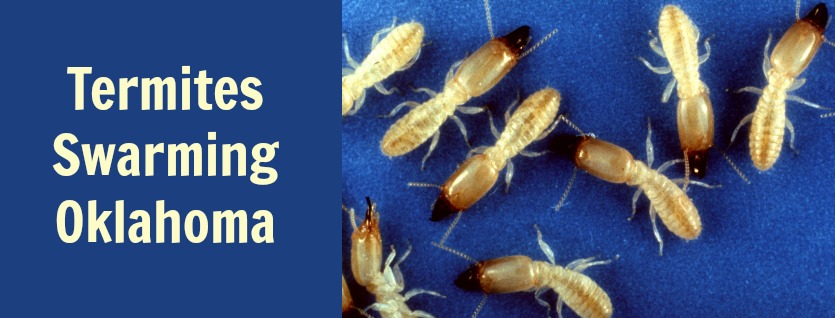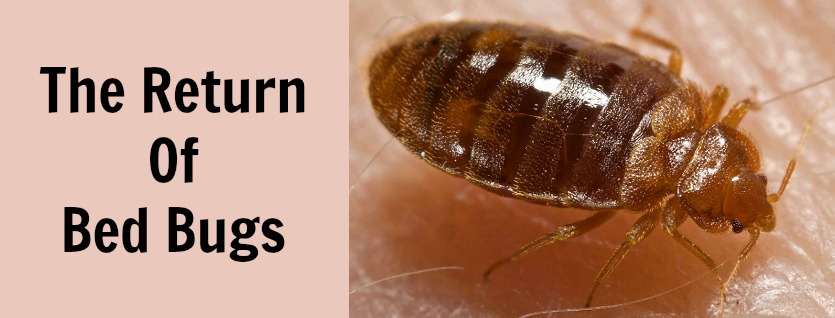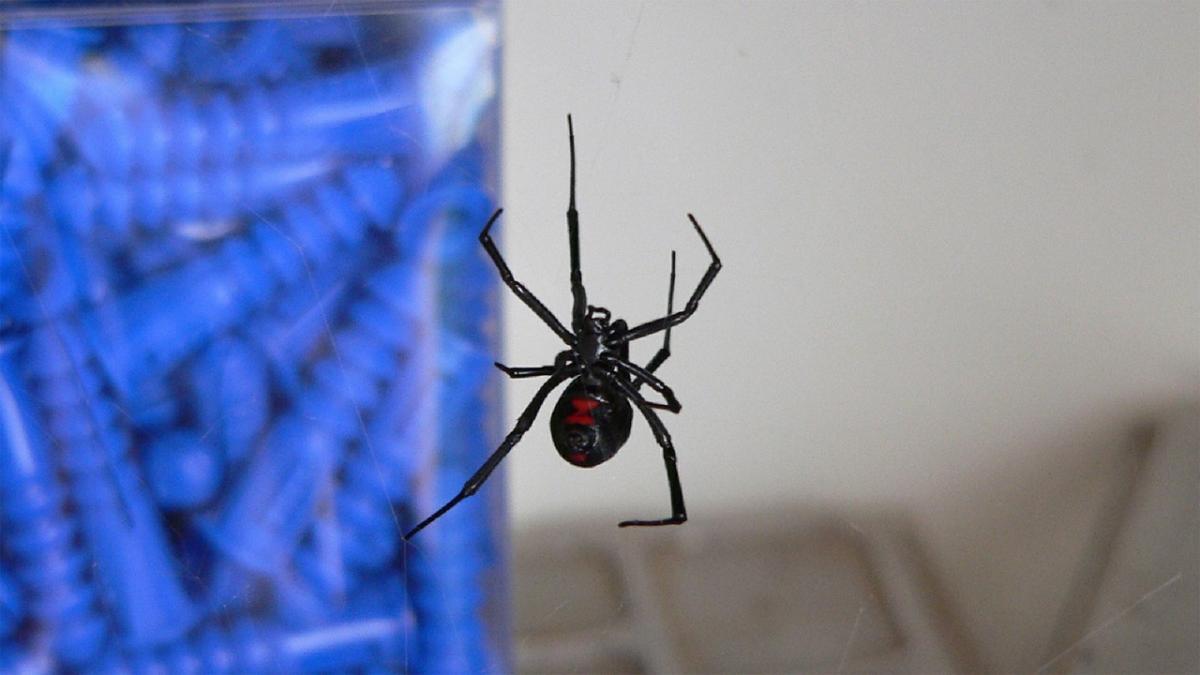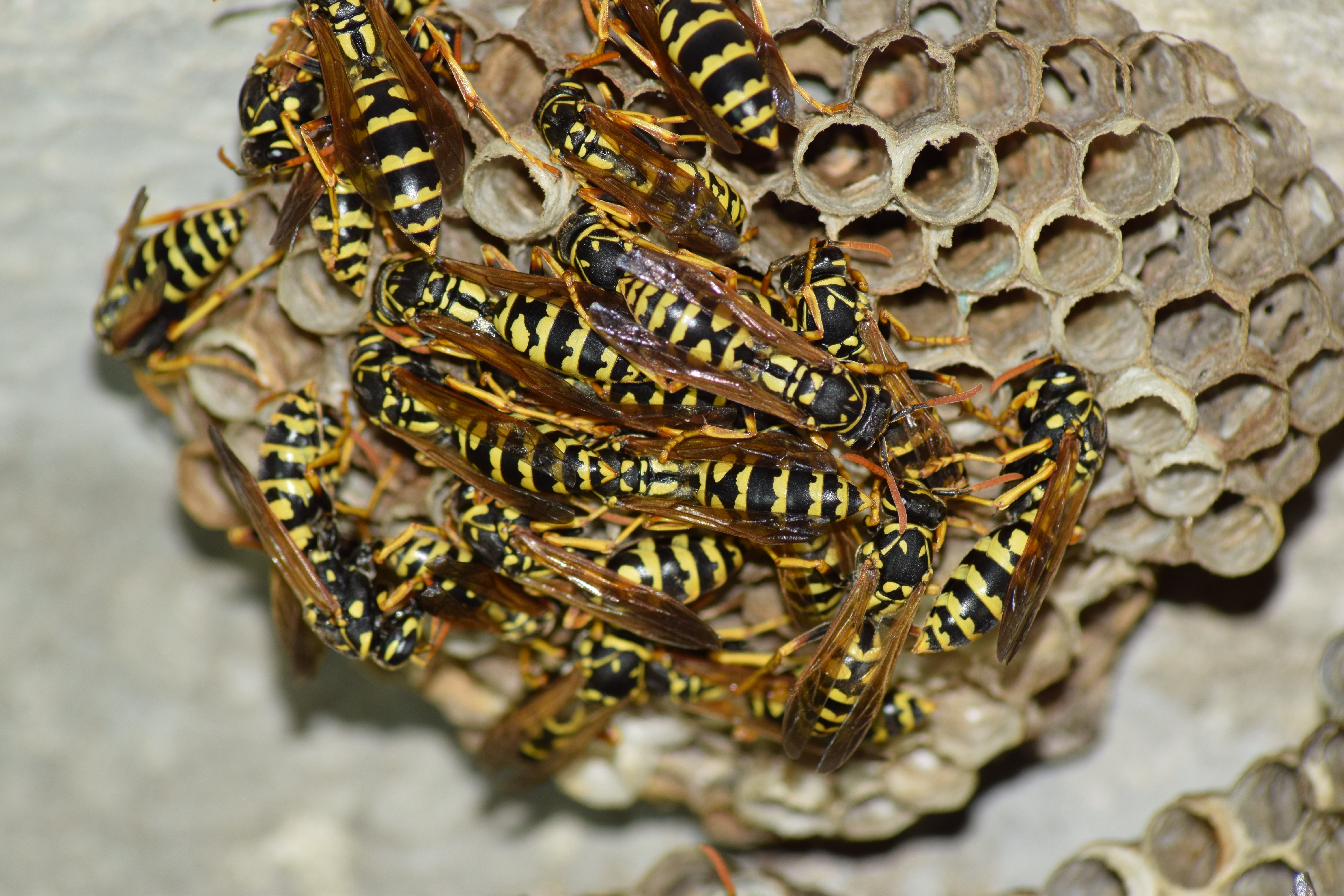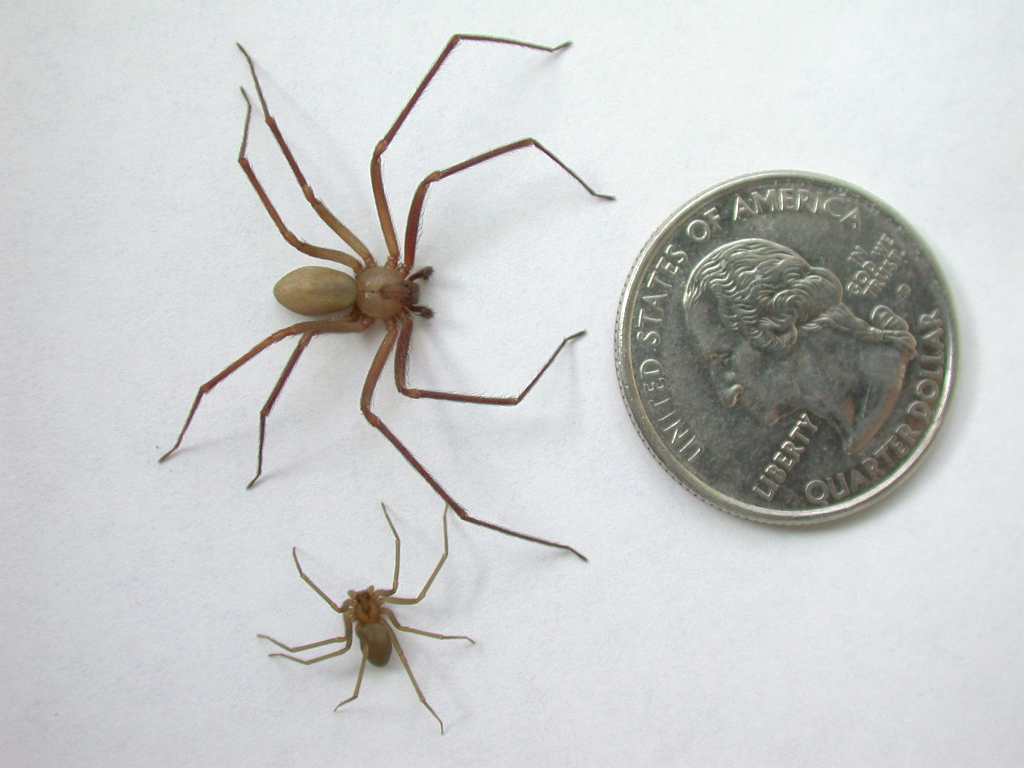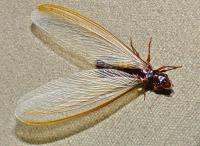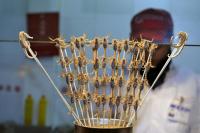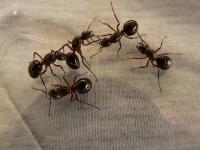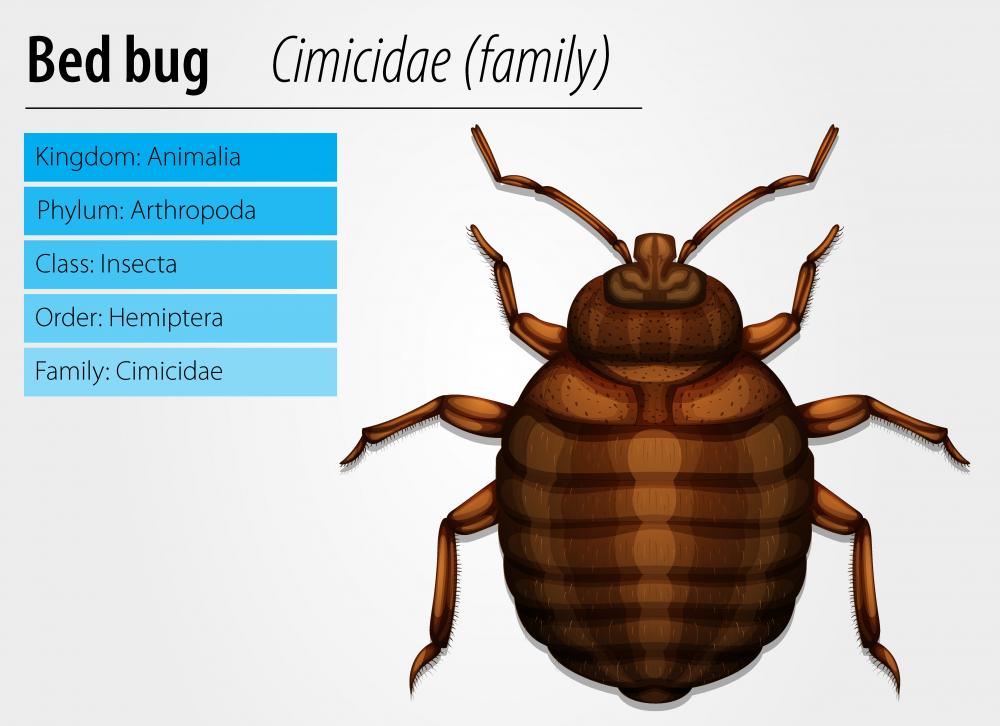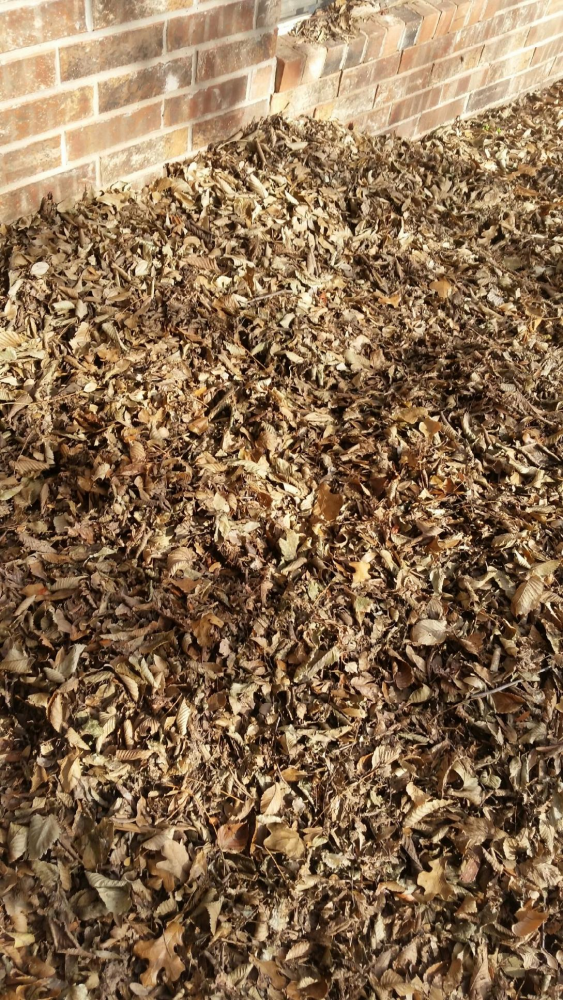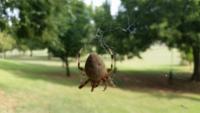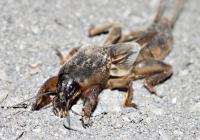Three Spiders in Oklahoma That Might Bite You
What to Do if These Eight-Legged Creatures Bite You Oklahoma is home to a wide range of spiders, some of which can pose a danger to humans. However, the negative reputation of some of Oklahoma’s spiders is unearned. Read on to learn more about some of Oklahoma’s most...
Five Ways a Tick Bite Can Make You Sick and What to Do
Don’t Let a Tick Bite Make You Ill Ticks are notorious for being hard to spot until they’re well established, and tick bites can make you sick. Are you aware of all the risks ticks can carry? More importantly, are you doing all you can to prevent yourself, your loved...
Household Pests That Cause Severe Health Problems
3 Household Pests You Need to Remove Right Now Some household pests can cause more damage than others, and it’s important to be able to recognize when you need professional assistance with a pest infestation. Though all pests are annoying, some are relatively...
Warning Signs of Bed Bug Infestation
How to Spot Bed Bugs Early Bed bugs are every homeowner’s worst nightmare, and it is essential to know how to identify a bed bug infestation as soon as possible, before it gets out of control. If you need help with pest control in Oklahoma City, The Bug Guy is the...
Pest Control OKC: Common Winter Pests
Pest Control OKC talks about common winter pests Winter is here and the pests are looking to make a nice warm winter retreat within the walls of your home! Most insects will die off in the winter or go into hibernation, but some species will look for a warm, dry place...
Pest Control OKC: Common Fall pests
The leaves are turning, it's getting colder, and the pests are moving in! Pest Control OKC is here to identify some common ones and what you can do when you see them. 1.) Cockroaches: Roaches need humans and their warm homes to survive the colder months....
German Cockroaches wreak havoc!
German cockroaches are a very serious threat to anyone that has respiratory problems. Their feces or dead bodies put our some nasty allergens that can cause allergic reactions and asthma. This is especially detrimental to young children or elderly. These roaches will...
Armyworms In OKC Are On The Move!
No one likes to see Armyworms in OKC! The fall armyworm (Spodoptera frugiperda) is a species in the order of Lepidoptera and is the larval life stage of a fall armyworm moth. The term "armyworm" can refer to several species, often describing the large-scale invasive...
Why do bugs come inside when it gets cold?
Why do bugs come inside when it gets cold? Do you notice that every fall, (Fall is about a month away!) bugs collect on the side of your home? Worse, they even get inside. Do you find clusters of bugs near your windows and in your attic? Why do insects come inside...
Flying Ant Day 2018 Came Early…
Flying Ant Day 2018 Came Early this year. What should we expect come fall/winter? Since flying ant day came early this year the diligent ants have had more time to work and multiply. This could cause an increase in home infestations as the weather cools down this fall...
The Deadliest Insects and Bugs in Oklahoma
Bees and Wasps Bees and wasps are most active during the warmer months in Oklahoma City and can be a nuisance to any lover of the outdoors. Their stings can bring an end to an enjoyable summer event quickly! For most, a bee or wasp sting will cause pain, redness, and...
Termites are Active Year-Round
People often ask me when are termites active. They are active in Oklahoma City all year. Yes, it is a fact that spring is the most active time. The swarmers come out in spring and in rare times right before fall. The swarmers are only looking to start a new colony....
Is there a good spider?
Is there a spider that is good for my garden? Which ones are poisonous pests that I need to get rid of? We will look at some common spiders you will see around your home in Oklahoma. Is there a good spider? Chances are, you've run into a few spiders (and their webs)...
When your ant comes to visit.
Have you every had a problem with ants in your house? Here's an article about ant treatment and how to minimize their presence in your home. When your ant comes to visit Ants are fine when they are out in the woods crawling through the grass, but when they get on the...
Did I just see a Scorpion?
Whenever you hear of a scorpion, it may conjure up images of the Sahara Desert. Believe it or not, there are actually between three and five different species of scorpions in Oklahoma! In this article we will discuss some of the attributes of Oklahoma's common Bark...
April showers bring Mosquitoes!
It's raining, it's pouring, now the mosquitoes are swarming! In this article we will discuss some simple steps to help deter our needle-nosed friends. April showers bring Mosquitoes! Mosquitoes are definitely in the top ten most annoying creatures on the face of the...
Pest Control OKC: What happens to pests in the winter Pt. 2
Pest Control OKC: What do other pests do in the winter? Pest Control OKC has a few more pests behaviors that let them survive the winter and come back to annoy you in the summer. Mosquitoes: Spend any time outdoors in the summer and you will eventually catch a bite...
Pest Control OKC: What happens to pests in the winter
Pest Control OKC: What happens to pests in winter? We all know the warmer months are the domain of pests. They seem to pop out of nowhere and invade our homes and BBQ. But why do we typically only have to deal with pests in the summer and spring? What happens to all...
Pest Control OKC: Keeping a summer home pest free
Pest Control OKC: How to protect a summer home from infestation You work hard, you save up, and your finally able to afford a summer home somewhere nice. But then you get there to enjoy a vacation you find it overrun with pests! What can you do to make sure that isn't...
Pest Control OKC: What’s eating your lawn?
Pest Control OKC: How to tell what's eating your lawn Not all pests are created equal, some pests live underground while other in nests in the trees. Some invade your home while others just carve miles of tunnels into the lawn your worked so hard to make beautiful....
Pest Control OKC: More Plants to help keep pests away
Pest Control OKC: Some more plants to keep pests out of your garden Last week, pest control OKC talked about some plants you can add to your home or garden to help keep away pests while adding some color and nature to your home. But those are just a few of the...
Pest Control OKC: Plants to keep away pests
Pest Control OKC: What to plant to drive away pests Gardens are a great investment in your home and your health. Gardening is a great way to get exercise and can leave your home looking beautiful. But all those beautiful plants can also attract not-so-beautiful...
Pest Control OKC: Keep pests out of the garden shed
Pest Control OKC: Keep your shed pest free It's starting to warm up, and that means it's approaching time to bust out the garden tools and start taking care of the lawn. But there's always that trepidation that comes with opening that garden shed for the first time in...
Pest Control OKC: Common Lawn Pests
Pest Control OKC: Identifying common lawn pests March is here and the weather is starting to heat up. Pretty soon it'll be time to get out and take care of the lawn again. But all the lawn care in the world won't help if you've got some of these pests. Pest Control...
Pest Control OKC: Bed Bug Bites and treatments
Pest Control OKC: Bed Bug Bites and how to deal with them Bed bugs are an invasive, annoying pest. They ruin furniture and are notoriously hard to get rid of, often requiring the work of a professional pest control expert. But by far the creepiest part about bed bugs...
Pest Control OKC: How to spot bed bugs
Pest Control OKC lays out how to spot bed bugs Bed bugs can be quite the hard pest to find. Often, they can exist for quite a long time without you ever noticing. Once you discover an infestation, it's important that you take steps to end the infestation quickly...
Pest Control OKC: Don’t let the bed bugs bite!
How to keep the bed bugs from biting with Pest Control OKC! Bed bugs have made a resurgence in recent years and they can be one of the most troublesome pests to deal with. In a survey conducted by The National Pest Management Association, 76% of pest control...
Pest Control OKC: Bed Bugs facts
Pest Control OKC: Facts about Bed Bugs Bed bugs are a terrible nuisance, they infest our bed and feed on us as we sleep. They're hard to discover and once you do, they're even harder to get rid of. It's good to know how these pests spread and how they feed in order to...
Pest Control OKC: Keeping Firewood pest at bay Pt. 2
Pest Control OKC has more tips to help pest out of your fireplace! The Bug Guy, Pest Control OKC, is back with a few more tip to help keep your home free from pests that might live in your firewood over the winter. Cover for the Summer: New firewood that's been cut...
Pest Control OKC: Keeping Firewood Pests at Bay
Keep the fire going without the pests with these Pest Control OKC Tips The fireplace is a wonderful home addition to have during the cold winter months. Few things are more relaxing on a cold winter day then sitting down with a nice book or hot cocoa next to a healthy...
Pest Control OKC: Pest-Proof your home Pt. 4
The final part of Pest Control OKC's breakdown of pest-proofing! The Bug Guy, Pest Control OKC, has some final tips to pest-proof your home this holiday season. Remember, infestations are nearly impossible to get rid of without professional help. If you've already...
Pest Control OKC: Pest-Proof your home Pt. 3
A few more pest-control tips from Pest Control OKC Just a few more way you can pest proof your home. Pest Control OKC knows it's a challenge to fight off infestation. Even the best measures can still end in infestation, if this happens gives the professionals at The...
Pest Control OKC: How to Bug-Proof your home Pt. 2
Pest Control OKC has some more tips for pest-proofing Pest Control OKC is back with some more tips to help pest-proof your home! Eliminate Moisture: One thing to keep in mind is that most insects need a certain amount of humidity to survive. If you can keep the air...
Pest Control OKC: More ways to Bug Proof your home Pt. 1
Pest Control OKC let's you know how to bug-proof your home It's finally starting to get colder, and that means pest are moving to find a warm roost for the winter. And there's no roost warmer and more inviting than your home! Pest Control OKC has some tips to...
Pest Control OKC: Prepping your house for Fall Pt. 2
The Bug Guy, Pest Control OKC, is back with more Fall Pest-Proofing 4.) Inspect Attic and Crawlspaces: Pests love low-traffic areas where they can infest your home in peace. Whenever days start to get shorter, grab a flashlight and some protective clothing and do a...
Pest Control OKC: Prepping your house for Fall Pt. 1
The Bug Guy, Pest Control OKC, here with tips to pest proof your house! Fall is fast approaching and all sorts of pests are looking to make a winter home in the crevices of your home. The Bug Guy, Pest Control OKC, is here with a few tips to keep them away. 1.) Don't...
Pest Control OKC: Fall Termites?
Pest Control OKC is here to set the record straight on a couple of things involving termites. Termites can be a pest year-round While it's true most termites reach peak activity (or swarm) during summer and spring any termite can cause damage at any time of year,...
Fall Pest Control OKC Services For Commercial Properties
Pest Control OKC: Keeping Commercial Buildings Pest Free Just like homes, commercial properties are also subject to insect invasions. The difference is that as a business owner, the liability is greater. You may think that your office building is safe from pest...
Pest Control OKC Team Discusses 3 Fall Bug Problems
Pest Control OKC: Bugs That Are Bugging This Fall As you start to enjoy the change of the season, gearing up for Halloween festivities, and partaking in fall events, it is our pest control OKC team's hope that your home remains pest-free. If you're one of the...
Pest Control OKC Team Shares About Fall Webworms
Pest Control OKC: When Webworms Take Over For many people, webworms are something they have seen plenty of times before. Fall webworms typically would spin their nests from April to September in Oklahoma, but the crazy weather could be a reason people would still see...
Pest Control OKC Team Takes Care Of Bothersome Flies
Pest Control OKC For All Manner Of Flies Last month our pest control OKC team discussed a bit about why so many insects were still buzzing around when usually by this time the "traffic" has slowed down. The truth is that things haven't changed very much for Oklahomans...
Pest Control OKC Services For Keeping Bugs Away This Fall
Pest Control OKC Helps Homeowners Avoid Fall Pests A lot of people tend to love the fall with the colorful leaves falling off of trees, the tasty treats, and plenty of seasonal activities to be have some fun doing, but it's difficult to focus on much else if your home...
Pest Control OKC Shares Information On Johnson Jumping Spiders
Pest Control OKC: Watching For Jumping Spiders You may have already known that Oklahoma is home to many different species of creepy crawling insects, but did you know it is also home to many different arachnids? It's true and today, our pest control OKC team is...
Pest Control OKC Answers Why So Many Pests Are Still Buzzing About
Bugs, Bugs, And More Bugs? Pest Control OKC To The Rescue! Oklahomans all over the metro area have been having a lot of problems with insects still buzzing around and getting into their homes. Flies are particularly problematic even at the beginning of September....
Pest Control OKC Answers Questions About Chiggers
Pest Control OKC: Informative Responses To Customer Questions Over the last weekend many people celebrated Labor Day festivities in various ways. Some enjoyed their time out at the lake near woodsy areas. Others had their usually backyard BBQ. Of course, being...
Pest Control OKC Explains What To Do When A Roach Bites
Pest Control OKC Reveals Cockroaches Bite! Of all the bugs in the world you probably don't automatically think about cockroaches when you think about the many crawling things which are fully capable of biting humans. It's true that cockroaches can bite! In fact, some...
Pest Control OKC Explains Why Cockroaches Are So Terrible
Pest Control OKC Explains Necessary Cockroach Extermination Mention cockroaches to anyone and you'll see an involuntary facial twinge and possible a shudder. Cockroaches are a disgusting pest that anyone who's ever had an apartment are all too familiar with. They're...
Pest Control OKC: Formica Ants And Oklahoma
Pest Control OKC: These Ants Don't Sting, They Spray The Bug Guy, your local source for pest control OKC, is here to tell you about a certain kind of ant. Formica ants are one of the many species of ants that can be found in Oklahoma. These ants are often called Wood...
Pest Control OKC: Lesser Known Pests
Pest Control OKC is here to tell you about some lesser known Oklahoma Pests Wasps, Roaches, Ants, Termites, and 'Skeeters. If you live in Oklahoma you're probably all too aware of these kinds of pests. Of course, that's not all the kinds of pests you can see here in...
Pest Control OKC: Discovering An Unlikely Yellow Jacket Nest
A “Yellow Jacket” Story Submitted To Our Pest Control OKC Team Some yellow jackets build aerial nests, but many build their nests in the ground. These types of colonies can typically be found under porches, stairs, in sidewalk cracks, at the base of trees, or in out...
Pest Control OKC Reports Of Scorpions In Oklahoma
Pest Control OKC: The Facts About Scorpions Oklahoma has become very well known over the last few years for its very hot summers. It's this very dry type of climate that makes it easier for scorpions to survive in our state. Today, our pest control OKC team would like...
Pest Control OKC Tackling Bugged Out Business Buildings
Pest Control OKC For The Office Whether you're serving customers from your business location or your employees are the only ones to step foot into the office, as a business owner you still want to maintain a clean working environment. From cleaning duties to...
Pest Control OKC Discusses Facts About Gnats
Pest Control OKC: A Little Bit About These Little Insects Do you notice any swarming gnats around after your 4th of July holiday celebration? Gnats may not seem like a big deal, because of their tiny stature, but they can quickly become quite the annoying problem....
Pest Control OKC Sharing Differences Between Millipedes And Centipedes
Pest Control OKC: Identifying Traits Of Arthropods Although commonly mistaken as insects both millipedes and centipedes are classified as arthropods. These multi-legged critters are also often confused for one another when startled people see one of them crawling...
OKC Pest Control Team Answers Why Silverfish Are Harmful
OKC Pest Control Sheds Light On Silverfish Insects Oklahoma, having a more humid climate than many other states, is known to attract many types of insects. One type of insect that loves warm places is called Silverfish. The most noticeable feature next to their silver...
Pest Control OKC Eliminating Butterfly Eating Ants!
Pest Control OKC Protecting Beautiful Butterflies Since the earliest days of spring beautiful butterflies have fluttered back to Oklahoma. Flower garden owners and lovers from all over the state can admire these lovely creatures as they interact with nature. Our pest...
OKC Pest Control Warning Of Brown Marmorated Stink Bugs
OKC Pest Control Shares A Story About A Stink Bug Stink bugs get their name from the obvious pungent odor that they erect when they are threatened. It has been determined that this stinky smell helps stink bugs protect themselves from predators. Not only do they...
OKC Pest Control: Hobo Spiders Are Crawling Out Of Obscurity
OKC Pest Control: Keeping An Eye Out For Hobo Spiders At one time hobo spiders were actually more well known as the venom was once said to be life-threatening. Today, the perspective may be a different as further research dispelled the deadly medical threat of a hobo...
OKC Pest Control Reports Of Cockroaches Inside And Out
OKC Pest Control Provides Cockroach Prevention There have been many reports from families of cockroaches appearing outside in their lawn and sidewalks. Then, there is the fear that they will migrate into the home. It's almost as if the song lyrics "no wind, no...
How Hornet Control Via Pest Control OKC Helps Save Honey Bees!
Pest Control OKC: Get Rid Of Hornets And Save The Bees Did you know that the most common honey bee we know in Oklahoma once originated from Europe? Most amazingly, European honey bees are now one of the most familiar insects and are becoming well-known for all the...
The Bug Guy In Full OKC Pest Control Action
April Showers Brings… Many Bugs and The Need For OKC Pest Control! Have you ever wondered why those pesky bugs are more active during warm spring and summer months? Ants, flies, wasps, spiders… all those creepy bugs have something in common; they need time to...
OKC Pest Control Talks About The American Dog Tick
OKC Pest Control Shares Information About This Common Tick As we mentioned in our blog article, last week, the threats of ticks are all too real. Of course, that story was just about Lyme disease and the one type of tick known for transmitting that disease. It's...
OKC Pest Control Reviews A Story About Ticks And Lyme Disease
OKC Pest Control Sharing A True Tale About A Tick Bite Normally, when you think about the presence of ticks in your yard it’s already well into the summer, but as you already know our temperatures in Oklahoma have been warmer than normal this spring. This is why our...
OKC Pest Control Team Looking Out For Brown Recluse Spiders
Warmer Weather Brings A Need For OKC Pest Control The warmer it gets outside the more Oklahomans find the desire to get out and become more active. Our OKC pest control team knows that people aren’t the only beings to enjoy springtime. In fact, Brown Recluse spiders...
OKC Pest Control Warns Against Paper Wasps
OKC Pest Control Reports A Mistake Made With Paper Wasps Most people are used to seeing wasps during summer months, but as you are well aware, Oklahoma has had some of the most unusual warm weather these past few months. This overly warm spring has caused insects of...
OKC Pest Control Eliminates Fleas For The Love Of Pets
OKC Pest Control: Disturbing Flea Facts Polls have been taken many times in the past to reveal that more than half of pet owners consider their animal companions to be part of their family. Just like any other member of the family, it’s important to give your pets all...
OKC Pest Control Team Warns Of Fire Ant Stings
OKC Pest Control: Making Your Yard Safe Not many people would willingly allow themselves to be bitten or stung by an insect for the purpose of scientifically cataloging the pain into an index, but that is precisely what Justin Schmidt did in 1983. As our OKC pest...
OKC Pest Control: Telling Of A Termite Horror Story
Termite Inspections By The Bug Guy’s OKC Pest Control Team To anyone buying a home should be a moment of joy, but for one real estate investor the events that unfolded during his first “flip and fix” home is enough to make anyone cringe. Matt Faircloth wrote about his...
OKC Pest Control: Termites Swarming Oklahoma
OKC Pest Control: The Risk Of Subterranean Termites The official day of spring is right around the corner and for many that means something good as warmer weather and outdoor activities are in the forecast. Others dread the coming of spring, because that means pests...
OKC Pest Control Recounts A Story Of A Black Widow Bite
OKC Pest Control Sharing A Tale Of A Painful Experience A story told in New York Times by Jackson Landers will most likely make you hope to never be bitten by a black widow spider. In his tale, he identifies what what it was like as the venom from a spider bite spread...
OKC Pest Control Helps You Identify Black Widow Webs
OKC Pest Control: Signs Of A Black Widow While the reign of insects and spiders seems to be more common in the spring and summer months, you may be surprised to find black widows hiding in places that are undisturbed for long periods of time. The best way to identify...
OKC Pest Control Reports The Return Of Bed Bugs: Part 2
OKC Pest Control: Protecting You And Your Bedding In part one of this series, our OKC pest control team went into detail about how bed bugs have made their way back into the lives of many Americans. We also gave some tips on how to identify these blood sucking bugs in...
OKC Pest Control Reports The Return Of Bed Bugs: Part 1
OKC Pest Control: Protecting You And Your Bedding Our OKC pest control team is ready for the month of February and all it has to offer, are you? If you have bed bugs, chances are you're probably not ready for anything except some relief! The month for love and romance...
How Safe is Your Home from Pests this Winter?
Most people don't think they need to get their homes sprayed for bugs in the winter due to the cold weather. Unfortunately, Oklahoma had a very mild winter last year, and we haven't seen a lasting freeze yet this winter. We are getting a lot of calls for help with...
Bee or Wasp? Which is It?
When we see a flying insect that resembles a wasp or bee, we usually don’t spend much time looking to see which it is. We run! But there are differences between the two that extend beyond appearances. Bees Wasps Insects
Spiders in Oklahoma
There are many types of spiders in Oklahoma, although only the Brown Recluse and Black Widow spiders are considered dangers to people. If you are like a lot of people we know, it doesn’t matter if a spider can or will bite you. Just knowing one is hiding under your...
Zika and West Nile Virus
Zika FactsFirst isolated in Uganda’s Zika forest in 1949, the Zika virus has recently gained a lot of exposure in the Americas due mostly to an increase of birth defects. The Zika virus is related to The West Nile Virus, yellow fever and dengue fever. There are two...
6 Termite Myths Debunked
Myth: You only need to worry about termites if you live in an older home. Termite inspections should be done every year especially if you have not had your home treated in the last 5 years. Even brand new homes should be inspected within two years of construction. ...
How To Keep A Termite Happy During Winter
Termites are fans of the little things. Provide your termites a little food, water and a cozy environment and they will multiply into a colony that takes over your home. There are things you can do to make your home less comfortable for these costly pests, though!...
Fast Facts About Termites – Infographic
Watch Out for Imposters!
We have been notified that there is at least one group in the OKC metro going door-to-door posing as The Bug Guy and soliciting business. We never go door-to-door soliciting business. Don't let strangers into your home! We will always wear shirts with "The Bug Guy"...
Eat Your Insects?
The practice of eating insects is known as entomophagy. There is a good chance that if you are reading this that the idea of eating insects is not an appetizing one. Did you know that the United States and Europe are a minority when it comes to eating insects, though?...
Ants are Everywhere!
Ants are no fun at the park, at a picnic, and certainly not in the kitchen. Year after year though ants search, tirelessly, for some way into your home or apartment. If you see one or two you can be sure there are much more you don’t see just waiting to make your life...
Your Oklahoma City Pest Control Resource
Spring is here for Oklahoma City and pest control is starting to come to the minds of homeowners. Warmer temperatures, rainy weather, as well as animals and people spending more time outdoors, tends to bring more of the insects and bugs indoors. The Bug Guy wants to...
The Bug Guy Gets Rid of Bed Bugs
Where did bed bugs come from? Originally from tropical climates, bed bugs were almost completely eliminated in the US in the 1940s. Their modern day comeback is most likely due to easier and more frequent international travel. While it seems as though the bed bug...
Sleep tight, don’t let the bed bugs bite!
When growing up as a kid, mom used to tuck us in and pray for us and then make this statement. Sleep tight and don't let the bed bugs bite! I'm sure a large quantity of us have heard this statement at some point in our lives. I used to ask why she would make that...
Record setting high temperatures!
Oklahoma City is experiencing record-setting high temperatures this week. With warm weather here it is the perfect ingredient for insects to start appearing. We have already started taking calls on spiders, ants, and termites. It is important to keep up a regular...
The ants are marching in!
Yes, the ants are marching in. The winter conditions will push ants inside. They do not like the cold and too much moisture in the way or rain, sleet or snow. Ants need dry warm areas to build colonies. Ants will forage for food and enough moisture to sustain their...
Termites survive in cold weather
Termites will survive in cold weather. They continue to function throughout fall and winter. Termites do not hibernate. I found termite activity recently on an extremely cold day. In Oklahoma, it does not stay below freezing long enough to detour termites from...
Fall Season Preparations
With cold weather approaching insects are making their way towards shelter. The shelter can be our homes. Leaves are falling and collecting around our homes. With falling temperatures, many types of ground cover will wilt and die. The combination of leaves and wilted...
Think it’s time for a roach treatment?
Cockroaches are a very filthy insect. The German cockroach is the most challenging to gain control of after they have been allowed to infest. Their dead bodies and feces are extremely hazardous to our health. Especially to our respiratory systems. I can't tell you how...
It is time to watch out for a pesky spiders
It is so disturbing to walk through your yard and walk through a spider web. I really do not like it when I'm taking the trash out at night and step through a spider web. It always leaves me wondering where the spider ended up after I disturbed the web. I really do...
Yard pests are very active right now!
There are many yard pest that can infest your yard. Two of the main yard pests right now are armyworms and mole crickets. Armyworms are pests that will come in droves and march side by side through a yard giving them the name Army worms. They look like a greenish...
Fleas are Here
Fleas are being reported all around Oklahoma City. We are taking many calls. The Bug Guy recommends 2 treatments 7-10 days apart to get rid of fleas. Adult fleas lay many eggs on any type of surface. We will come in and spray with an EGR added to our chemical. An EGR...
Winter Time Pests
I have noticed with the constant change of the weather that insects have remained resilient to these changes. I have seen activity in many different areas. Insects do not hibernate. They must survive and they do. It is helpful to continue to keep the fall leaves raked...
Termites Vs. Earthquakes
I have had many people ask me just how much damage can termites cause. My answer to that is that termites can cause major damage if left untreated. So much that they are the cause of more structural damage than earthquakes and storms combined. It is unfortunate that...
Fall season Pest
With Fall arriving we have Fall pest to contend with. After having plenty of moisture lately all insects have thrived. The Bug Guy has taken many calls on beetles, crickets and spiders. Spiders are thriving on all these other insects. I am real tired of walking...
The most up to date version of Termidor
The Bug Guy is now using the most up to date version of Termidor, which is America's #1 termite defense product. The Termidor HE version attaches to the soil better providing longer protection. It is also the most green version requiring less water in its mixture....
Protect Your Home from Termites this Fall
Termite season is a very active one right now in Oklahoma, since this summer has been very wet and humid. Termites live in humid areas, and due to the more than normal humidity, they haven’t run out of moisture yet and aren’t dying. This produces a problem for...

